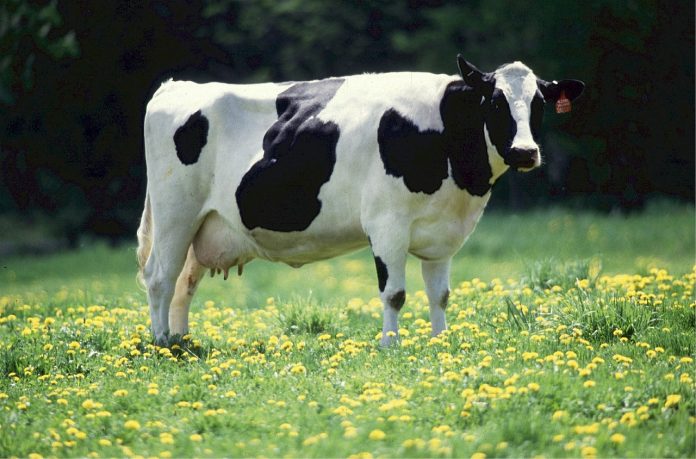Summertime brings thoughts of ice cream and baseball. The post-game little league celebration brings both teams to the local ice cream store to enjoy a refreshing ice cream treat.
Dairy cows do not play baseball, but they do work hard and expend a lot of energy producing high quality, nutritious milk which churns into that delicious ice cream. A dairy farmer is a “cow coach” and provides the correct resources to allow the cows to win during the summer.
Summertime heat brings serious consequences to dairy cows. Dairy cows have an expansive four stomach digestive fermentation system. That system successfully converts grasses and other non-edible human ingredients to make healthy and nutritious 97% fat free milk.
Heat impacts
In the process of making milk, a large volume of fermentation products get generated among which one is body heat. A dairy cow’s ideal outdoor temperature is 40 to 60 degrees F. A hot day for a dairy cow is above 65 degrees F and a really hot day is over 90 degrees F.
Hot temperatures result in changes to dairy cows where they exhibit one or a combination of symptoms. The visible sign’s dairy cows exhibit in hot weather is higher respiration rates, more water consumption, lower feed intake, more drooling, less rumination and less time lying. Inside the cow, changes occur which include higher body temperatures and more acidic stomach (rumen).
Further down the digestive system the intestines change and become more permeable, often called “leaky gut”. Leaky gut creates a condition where cows become more prone to health challenges. As a result of all these changes, milk production, milk fat percentage, reproduction and health can decline. Good news is that dairy cow coaches can help reduce the effect of these challenges. A coach must observe his players (cows) and see how to help them. Identifying when cows are hot is a must.
Finding problems
A practical and easy method to evaluate dairy cow heat stress is to measure respiration rate. It takes good observation skills, a few minutes and some patience each day.
Quietly enter the barn in late afternoon when feeding, milking or manure scraping activity is not occurring. Count respirations on 12 individual cows and convert to respirations per minute. Respirations of 40 to 60 are normal, 60 to 79 indicate mild heat stress, 80 to 99 moderate heat stress and over 100 severe heat stress. High humidity and nighttime temperatures above 60 degrees create more stress.
How to help
How can a “dairy cow coach” help improve cows in the summer? Turn fans on when temperatures are above 68 degrees F. Allow the fans to run through the night as dairy cows do not cool down until the following morning after a hot afternoon. Fan air speeds of 5 miles per hour are suggested for all cows standing or lying.
Install water soakers that run intermittently with the proper frequency and volume of water. Website references provide guidance on proper soaker installation. Water soakers improve the effectiveness of heat removal from the dairy cow’s body. As an example, on a hot summer day when you exited the pool you felt cool. The cows gain the same benefit.
Nutrition and ration design can be adjusted to reduce the effects of heat stress. Add extra water tanks to the barn and provide plenty of clean water. Clean out the drinker tanks each week. Highly digestible forages and co-products with low toxins need to be fed in the summer to give optimal NDF digestion to support feed intake. Proper degradable and undegradable protein and amino acids is important along with mineral and vitamin fortification to support cow health. Fatty acid balancing supports higher milk components and reproductive performance. Ration additives can support rumen health, production and immunity. Select additives that have proven non-company research data and have a minimum economic return (benefit:cost) of at least 2:1.
The effective “dairy coach” understands, monitors, and implements summer heat resources to successfully bring the game win for their dairy cows. Good success to all the great dairy farm cow coaches for the upcoming summer season.













